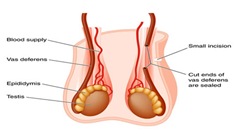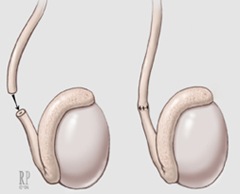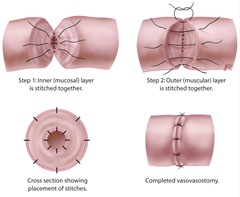 In this article we’ll explore the importance of the surgical microscope in vasectomy reversal and how it contributes to optimal patient outcomes. Vasectomy reversal is a delicate procedure that requires extreme precision to reconnect the vas deferens and restore the flow of sperm. One of the most critical tools in ensuring a successful outcome is the surgical microscope. This advanced piece of technology allows urologic microsurgeons to perform highly intricate procedures with accuracy that would be impossible to achieve with the naked eye.
In this article we’ll explore the importance of the surgical microscope in vasectomy reversal and how it contributes to optimal patient outcomes. Vasectomy reversal is a delicate procedure that requires extreme precision to reconnect the vas deferens and restore the flow of sperm. One of the most critical tools in ensuring a successful outcome is the surgical microscope. This advanced piece of technology allows urologic microsurgeons to perform highly intricate procedures with accuracy that would be impossible to achieve with the naked eye.
Why Precision Matters in Vasectomy Reversal
The vas deferens is a narrow, muscular tube—approximately 3 millimeters in diameter—tasked with transporting sperm from the testicles to the urethra. During a vasectomy reversal, the surgeon must realign and reconnect the two severed ends of this tube. The reconnection site is less than 1 millimeter in diameter, making it essential to use precise microsurgical techniques.
Even the smallest misalignment or excess scar tissue can prevent the flow of sperm, resulting in a failed reversal. The use of a surgical microscope ensures the accuracy and fine motor control necessary for long-term success.
What Is a Surgical Microscope?
A surgical microscope is an operating room tool that provides high levels of magnification, depth perception, and illumination for the surgeon. Unlike a standard loupe (magnifying glasses worn on the head), a surgical microscope offers:
- Up to 25x magnification: This enables the surgeon to clearly see blood vessels, spermatic tubes, and internal structures of the vas deferens.
- Enhanced depth of field: Improves visualization of multiple tissue layers simultaneously, allowing for precision suturing.
- Illuminated field: Built-in lighting illuminates the surgical site, reducing shadows and improving contrast.
- Stability and ergonomics: Mounted on a stable base with adjustable arms, it allows for steady imaging throughout the procedure.
Microsurgical Techniques Enabled by the Microscope
Vasectomy reversal typically involves one of two surgical techniques: vasovasostomy or vasoepididymostomy. The choice depends on whether sperm is present in the fluid near the vasectomy site.
- Vasovasostomy: This is a direct reconnection of the two ends of the vas deferens. The surgical microscope allows for precise placement of 10-0 nylon sutures, thinner than a human hair, to ensure a tension-free and leak-proof connection.
- Vasoepididymostomy: This more complex procedure involves connecting the vas deferens directly to the epididymis when a blockage is detected. The microscope is essential in navigating and suturing the extremely delicate tubules of the epididymis.
Benefits of Microscope-Assisted Reversal
Using a surgical microscope in vasectomy reversal has been shown to significantly improve outcomes:
- Higher patency rates: Microsurgical reversals result in better success rates, meaning sperm returns to the ejaculate in a higher percentage of cases.
- Lower risk of scarring and blockage: Reduced tissue trauma leads to better healing and fewer post-operative complications.
- Shorter operative time: Experienced microsurgeons using a microscope can complete the procedure more efficiently, improving safety.
Choosing a Surgeon Skilled in Microsurgery
Not all urologists are trained in microsurgical vasectomy reversal. It’s crucial to choose a surgeon with specialized training and experience in microscope-assisted techniques. The use of a surgical microscope is not only a technical advantage—it’s a hallmark of a dedicated microsurgeon focused on the best possible patient outcomes.
The Role of a Surgical Microscope in Vasectomy Reversal Conclusion: The Microscope Makes the Difference
The surgical microscope plays a pivotal role in the success of vasectomy reversal. By providing magnification, illumination, and precision, it allows skilled urologists to perform the delicate reconnections necessary for sperm to flow naturally again. If you’re considering a vasectomy reversal, ensure your surgeon utilizes this essential tool as part of a comprehensive microsurgical approach.
Schedule a Consultation
To learn more about microscope-assisted vasectomy reversal and explore your fertility options, contact:
Yaniv Larish, MD
4 East 76th Street
New York, NY 10021
646-862-5500



